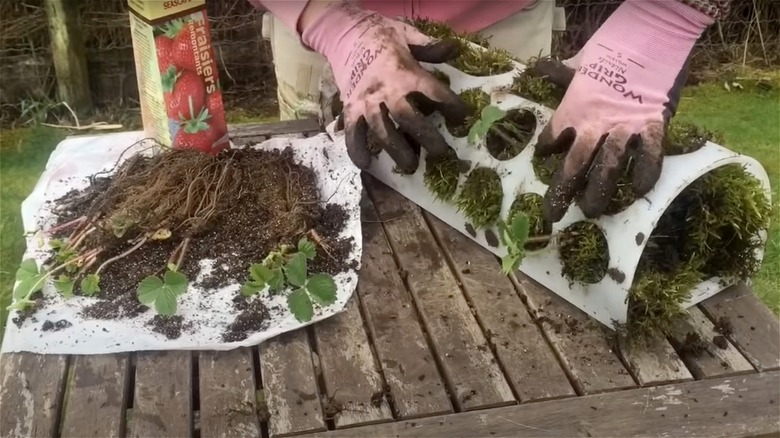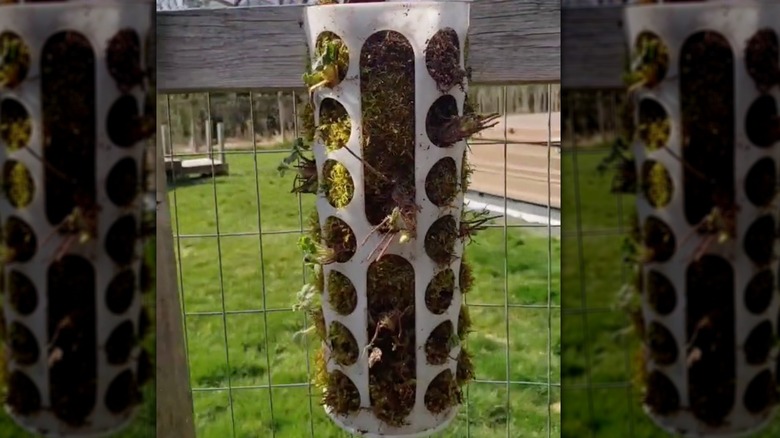If you love gardening but live in a small home or apartment, you may assume that your planting and harvesting dreams can’t come true. However, no matter how much space you have, you’ve always got enough to grow at least a few plants, as long as you have the right conditions. When creating a garden in a small area, it’s important to use vertical space to your advantage, and this DIY hack will help you do just that. Using an IKEA VARIERA plastic bag dispenser as a planter will allow you grow plants with shallow roots effortlessly, and you can hang it on a fence, railing, or wall to save square footage.
The IKEA plastic bag dispenser hack is the best budget-friendly way to start your garden. It costs about $5 on IKEA’s website, and it’s tall and thin, meaning that it can fit in even the tightest corners. You can use it to vertically grow cucumbers, strawberries, lettuce, thyme, oregano, or azaleas, as their roots will grow horizontally just slightly below the soil’s surface. Plus, it has various holes around the cylinder that allow plants to poke through as they produce. With a bit of moss, soil, and seeds or seedlings, you’ll have fruits and veggies growing everywhere on your balcony or patio.
How to use IKEA’s bag dispenser as a vertical garden

YouTube
The IKEA plastic bag dispenser is the holy grail for gardening in a small space. The plastic container is a tall cylinder with multiple holes on either side. While it’s meant to hold trash bags, the holes are an excellent route for plants to grow through. In addition, the plastic dispenser has clips along the sides that let you open it and lay it flat, so you can add moss and soil without struggling. When you clip the sides to close the dispenser, it holds everything inside without popping open.
To start your vertical garden, you’ll need the IKEA bag dispenser, moss, soil, and seedlings or seeds. It’s best to use moss instead of packing free soil into the dispenser, since it can be cut into a large layer and won’t fall out through the holes. Start by opening the bag dispenser and laying it flat against a table. Add the moss layer with the dirt side facing up and the green side facing the holes. Pile a layer of soil on top of the moss’ dirt and slowly roll the cylinder closed, sealing in the moss and soil. To add your seeds or seedlings, push openings in the moss and plant through the container’s holes. Continue making holes and adding plants until you run out. Finally, place or hang the dispenser on your balcony, water the plants, and watch them grow.
Why this hack works

sow.and.dipity / TikTok
When gardening, you want your plants to have enough space to grow, breathe, and soak up the sun without trouble. Most plants grow in garden beds or direct soil, where many seeds can be planted and still have enough area to extend their roots. You could set up a garden bed on your balcony or patio, but it’ll take up a lot of space. Instead, using an IKEA bag dispenser takes up little to no space, and plants with shallow roots will still have enough room to grow. You can set it up in any corner of your balcony by attaching hooks and chains to make it a hanging planter.
Also, standard planters are made with a system to ensure proper drainage for plants to prevent root rot. The plastic bag dispenser can work without a drainage system since it has an opening along the bottom where it unravels, making it easy for the water to slip through. However, if desired, an extra drainage system can be added before putting in the moss, soil, and seeds. Drill a few holes in the bottom of the planter, then add drainage materials. If you plan to display it inside, you’ll need to put a plate underneath the dispenser to catch the water so it doesn’t damage your floors. Overall, you’ll have an incredible vertical garden growing in no time.




